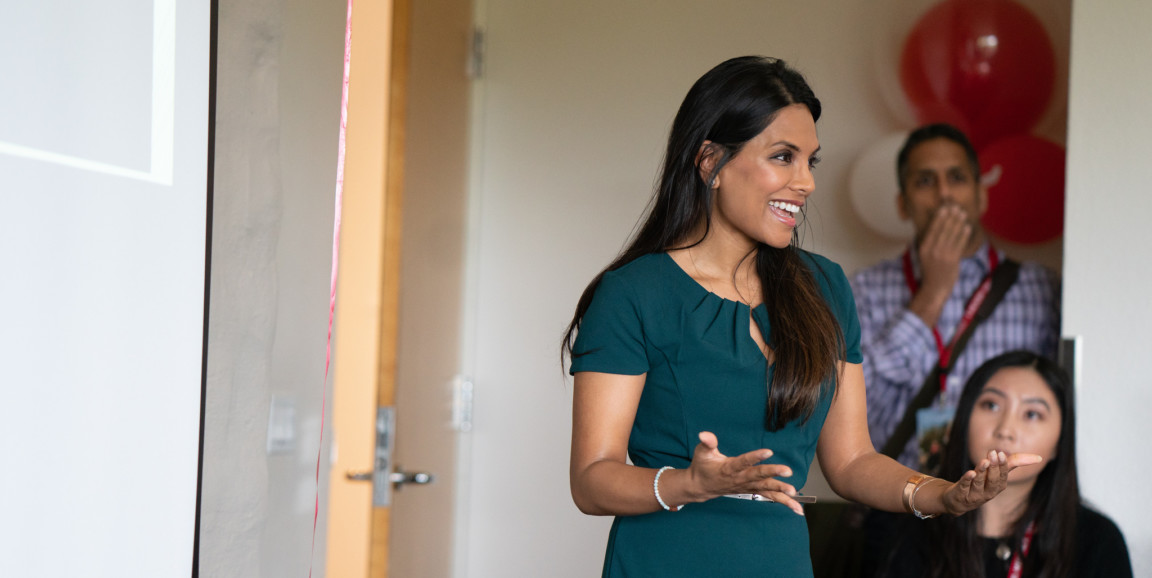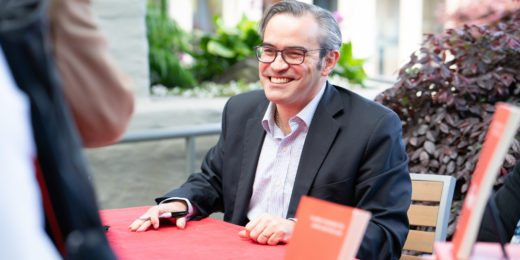To prepare for medical school, it would make sense to study chemistry and biology, or perhaps even statistics and computer science. But several speakers at Stanford Medicine X | ED Saturday morning pointed to two fields of study they say could provide excellent foundations for careers in medicine: Landscape architecture and journalism.
In fact, Stanford clinical informatics fellow Chethan Sarabu, MD, went even further: A major in landscape architecture is the best undergraduate major for future doctors, he told attendees of a breakout session, admittedly "a little tongue-in-cheek."
"I hope to convince every one of you to go study landscape architecture," a smiling Sarabu said of his own major.
Sarabu pointed out that modern landscape architecture is rooted in efforts to improve public health. He shared the story of Frederick Law Olmsted, whose mission in designing Central Park 160 years ago was, in part, to improve the mental and physical health of New York City residents. (Olmsted also played a key role in the creation of the Stanford campus).
"Landscape architecture provides a lens to see opportunity and to design what may not exist," he said.
Landscape architecture and medicine, Sarabu said, both require thinking at different scales -- whether the difference is between creating a backyard garden and designing a regional park, or between studying a single gene and studying the genetics of hundreds of patients.
Both fields require practitioners to consider how systems change over time and to leave room for unanticipated developments -- such as a storm, or an infection. They both also draw on spatial reasoning, Sarabu said, displaying a slide pitting an aerial landscape against a strangely similar brain scan.
"With all these different forces coming together, studying landscape architecture gave me a certain way of thinking about the world that drove my career in medicine," he said.
As the health benefits of mindfulness and exercise grow increasingly clear, connections between landscape architecture and medicine can be found globally, Sarabu said. For example, he pointed to such programs as Park Rx, which brings together land agencies like the National Park Service and community health groups, including pediatricians, to encourage people to improve physical and mental health by becoming more active in outdoor activities.
Another example: Tokyo is using creative design strategies to improve its residents' mental health. And children's hospitals, including the new Lucile Packard Children's Hospital Stanford, are incorporating green space and outdoor areas into their building projects to benefit both patients and staff members, Sarabu said.
Current and future physicians can also learn important lessons from the field of journalism, said speaker Amitha Kalaichandran, MD, a freelance journalist and resident in pediatrics at the Children's Hospital of Eastern Ontario. In particular, the curiosity that drives leading journalists to dig deeper is a critically important trait in medicine, she said.
We're all naturally curious, Kalaichandran said, "But we seem to lose it along the way, especially in medicine: Why is that?"
In medical training, asking questions can be viewed as insubordination and unnecessarily time-consuming, she said. But the quickly changing pace of medicine and the widespread distribution of information is dismantling the traditional role of doctors as gatekeepers. Anyone, from the most junior medical student to a patient, could have an important contribution, she said, and questions serve as an important balance, to make experienced physicians pause for an instant and double check their work.
What is the best way to foster that curiosity and critical thinking throughout medical training?
Kalaichandran offered three tips:
- Identify how you and your colleagues express curiosity. Do you jot notes down? Or blurt ideas out?
- Try to remain open-minded and flexible.
- Cultivate a community of curious people to share ideas.
"Your curiosity may just need to be reignited and [Medicine X] is just the place to do it," she said.
Photo of Amitha Kalaichandran by Justin Lai / Stanford Medicine X | ED






